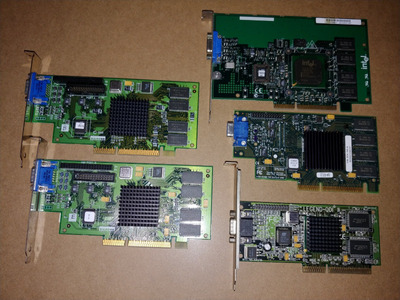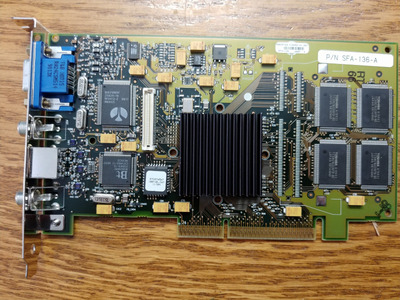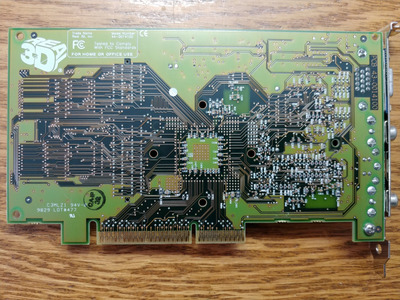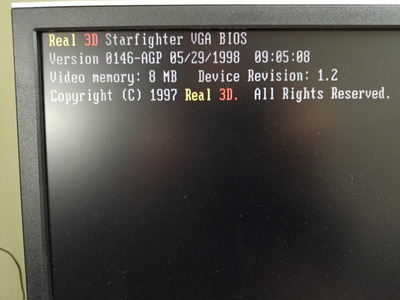Reply 20 of 28, by Ozzuneoj
- Rank
- l33t
Nice post! I've always been somewhat fascinated by these things since they are (as of right now) the only graphics cards released by Intel. Now, with Intel set to release some new ones at some point in the near future, it's cool to take a look back at where it all started. I have a small collection of i740 cards myself.
Here is a picture of the ones I have currently.
The QDI Legend i740 with SGRAM is one I've not seen anywhere else. When I saw it in a lot online I had a tough time identifying it without seeing the "i740" printing in the lower left corner.
Funny story... that QDI card was "dead" and sitting in a box of "cards I can't fix so I'll resell for parts\scrap" just a few days ago. When I saw this thread, it reminded me of that card sitting in the box that I hadn't been able to get running (no display). I dug it back out and did some extra tinkering\cleaning and to my astonishment, it started working! There are some scratches across some traces on the back... I think maybe a fragment of something was bridging some of them and causing the card not to work, because it started working once I ran a thin probe between the traces to clean them out. It works great in my test system and I played a couple old games on it. Not a perfect 3D accelerated gaming card by any means, but pretty decent if you consider what many other dedicated graphics companies had to offer gamers (S3, Trident, Cirrus Logic, 3D Labs, etc.). So, thank you for posting this and motivating me to fix a weird old card. 😀
Now for some blitting from the back buffer.



